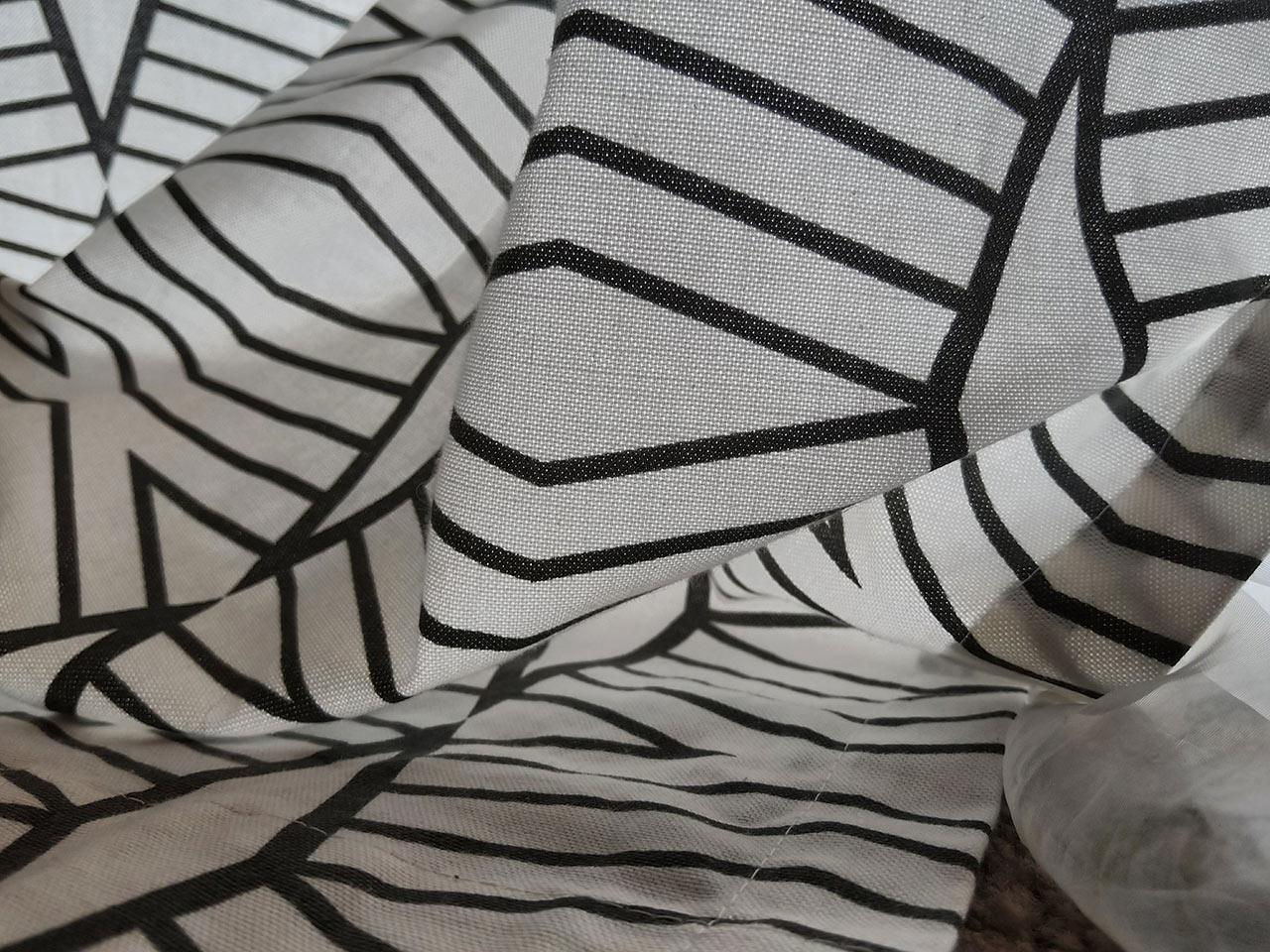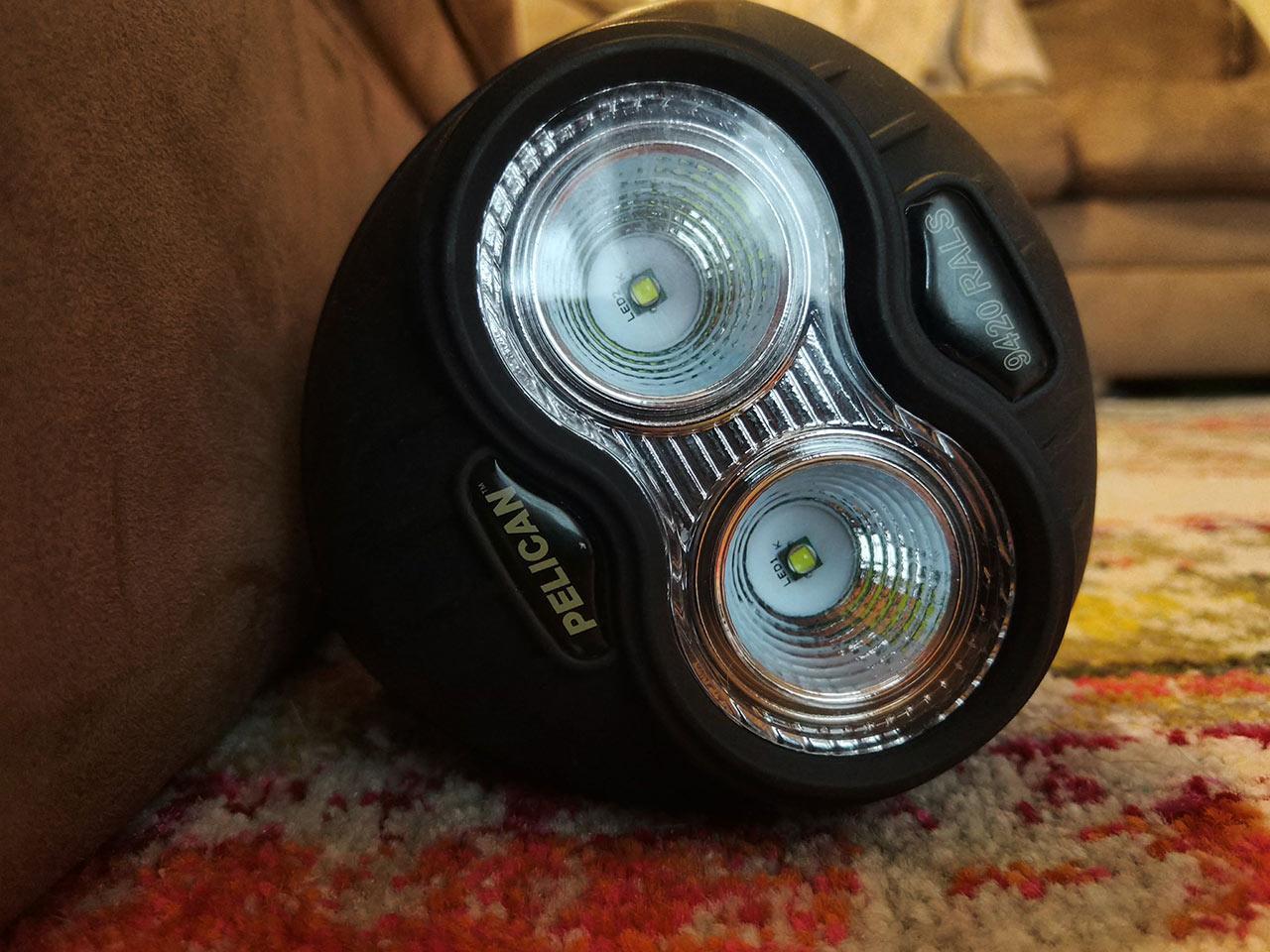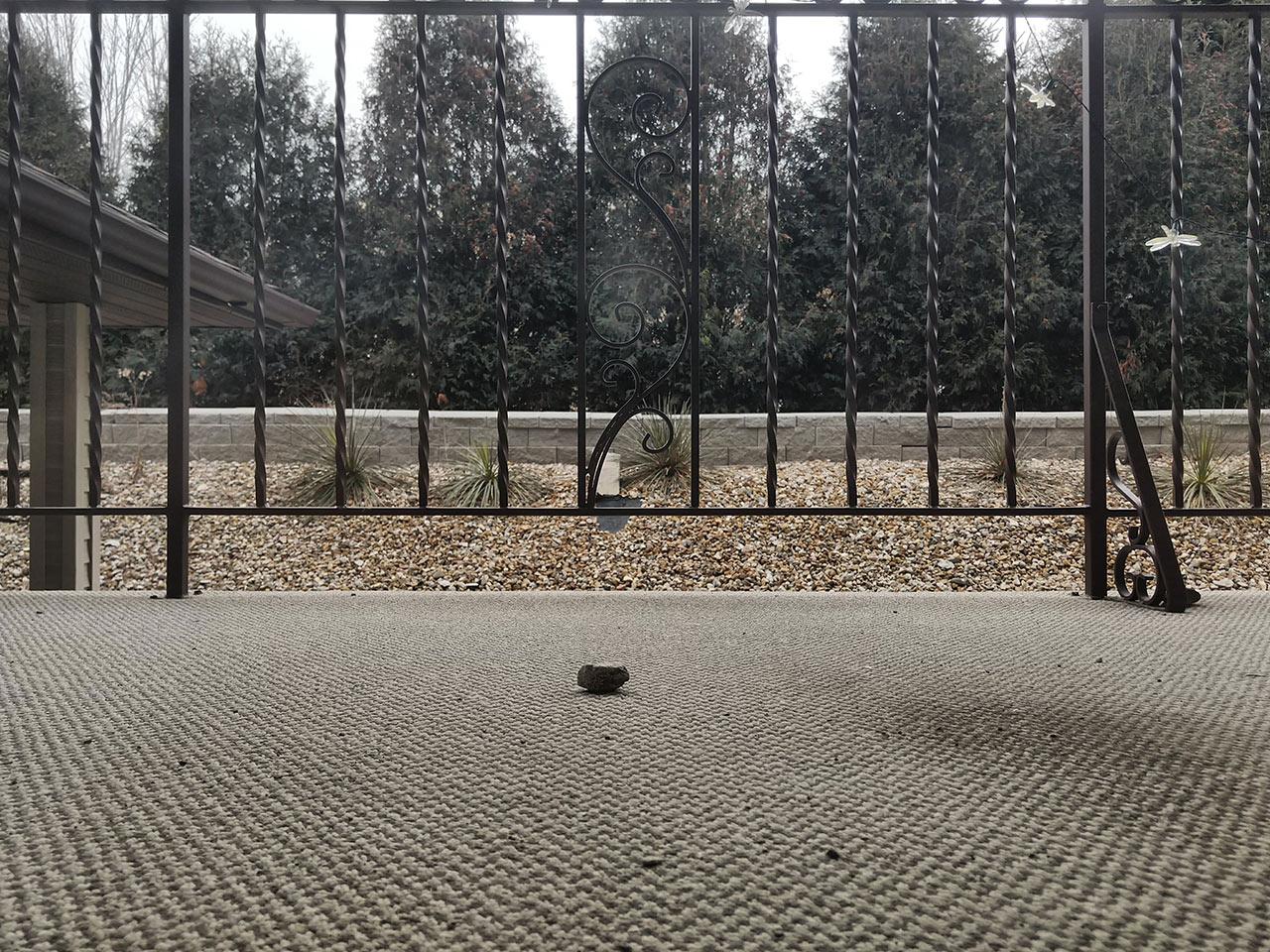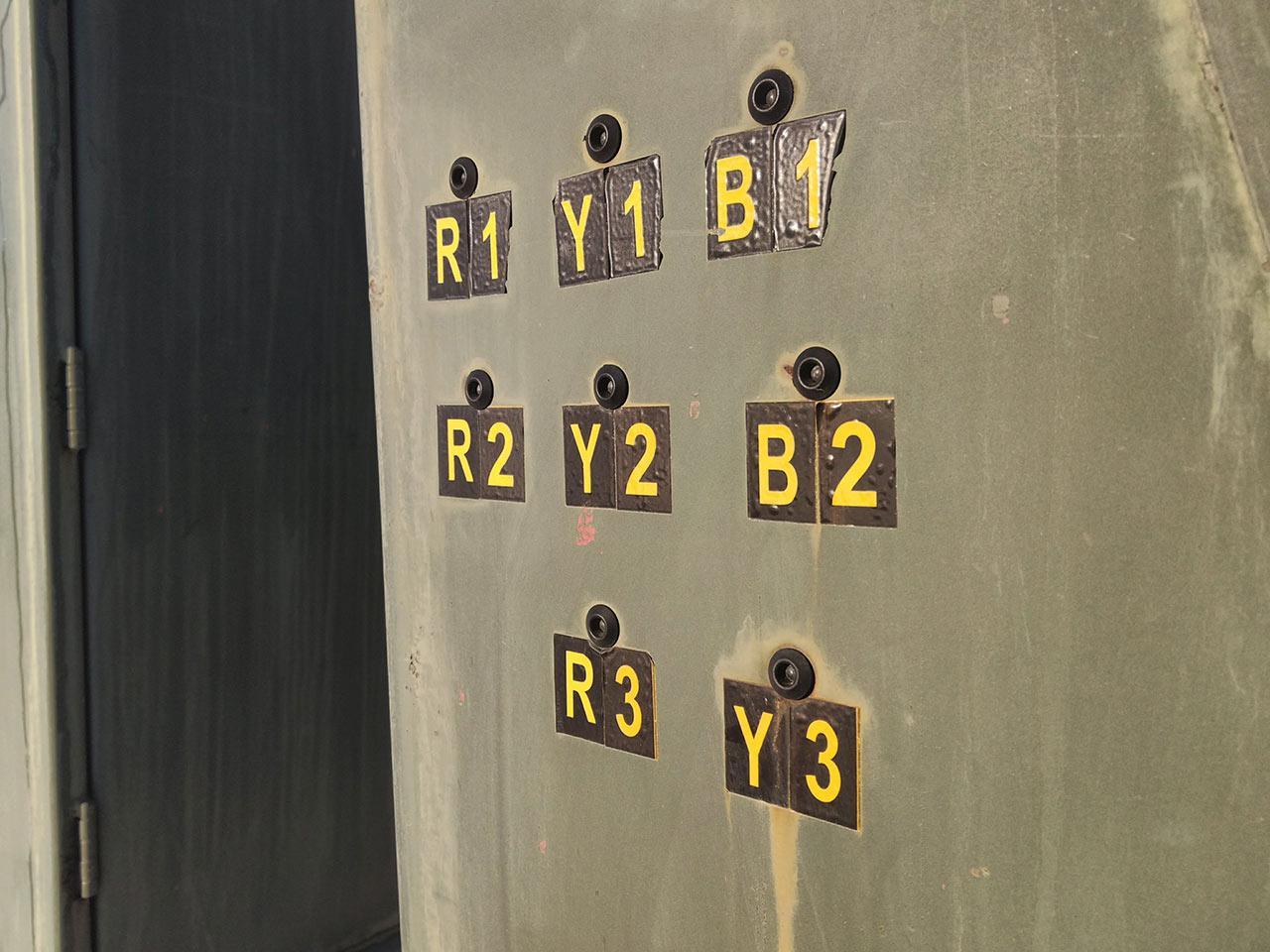Razer Phone Review : Real Mobile Courage
- Speakers get extremely loud
- Flat, sharp, bright, rectangular display
- 120Hz smooth refresh rate
- Granular app/game optimization controls
- USB-C THX DAC Audio Adapter included
- Speakers get a tiny bit snappy on high end
- Camera app lacking features
- Camera output just decent, not quite spectacular
- Front-facing speaker grills difficult to keep clean
- No headphone jack
The first Razer Phone clearly wasn't designed to take on the competition with bright, flashy colors. Razer didn't make their first phone with curved edges, and it didn't include a front-facing 3D face-sensor setup for animated emoji messages. Instead, Razer took the top-notch knowhow of the team at formerly-NextBit and combined it with their own understanding of their massive cult of modern gamers. With some top-level branding and a genuinely nice box to package it all up, the Razer Phone is like no other company's "first try" I've ever experienced.
Flat Hardware
I put "courage" in the title of this review because of the surprisingly traditional approach Razer has taken with the industrial design of this smartphone. At a time when the biggest smartphone brands in the world are employing displays that cascade over edges, have curved corners, and come in all sorts of odd shapes, the Razer Phone's display is decidedly traditionally rectangular.
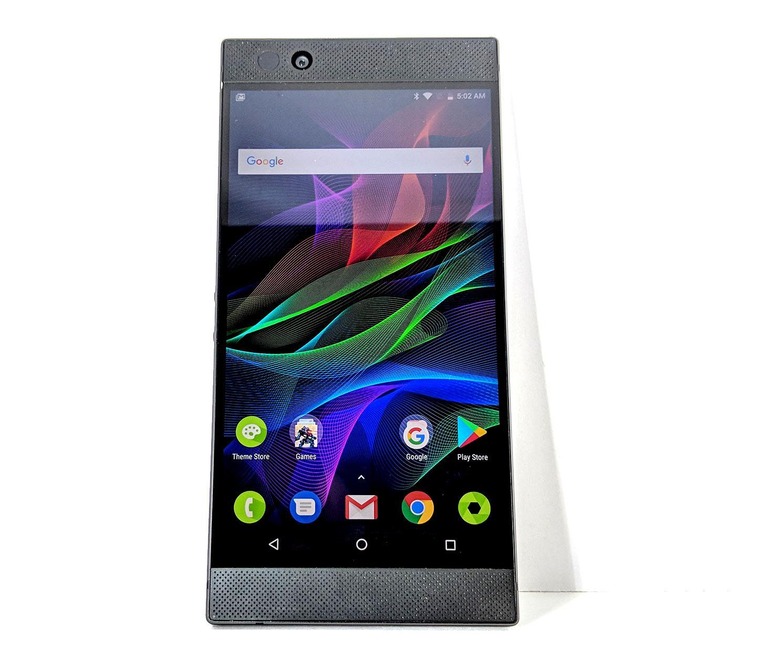
There's a tiny bezel between the display and the edges of the glass that covers it, and two of the four sides of the phone have significant bezels as well. But while some companies seem to now consider bezels a negative, Razer lives in the real world, where people have fingers. Fingers that grasp the phone and sometimes spill over the sides of the phone – they're out there!
As such, the Razer Phone has minimal bezels on the left and right of the display (in portrait mode) and bigger bezels above and below the display. And those bigger bezels are in play for more than just a place to grip. They also house the two front-facing speakers for the phone.
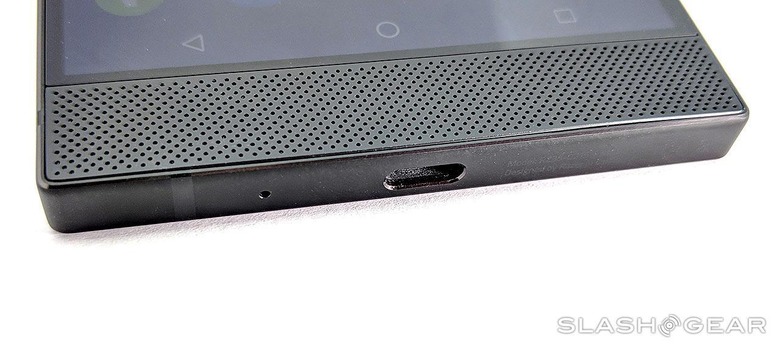
Look upon these face-blasting speakers and rejoice. As it is with the Google Pixel 2 XL and HTC-made phones of the past (plus a few other stragglers), the Razer Phone makes its speakers face forward. You'll find that most Apple-emulating smartphone manufacturers have followed the iPhone's lead in pushing the speaker to the edge, and downward.
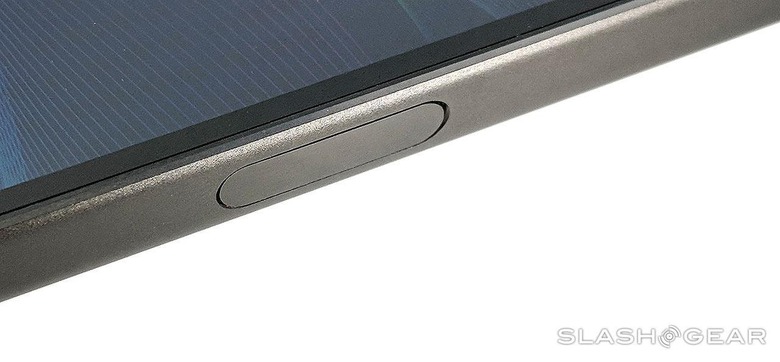
Like the NextBit Robin, this device has a power/lock button that sits flush with the surface of the side of this smartphone. This is perfect for the Razer Phone as it minimizes any chance that I tap said button on accident. This button is also home to a fingerprint reader – one that works just as well as any other print reader I've used on a similarly sized/priced device over the past year.
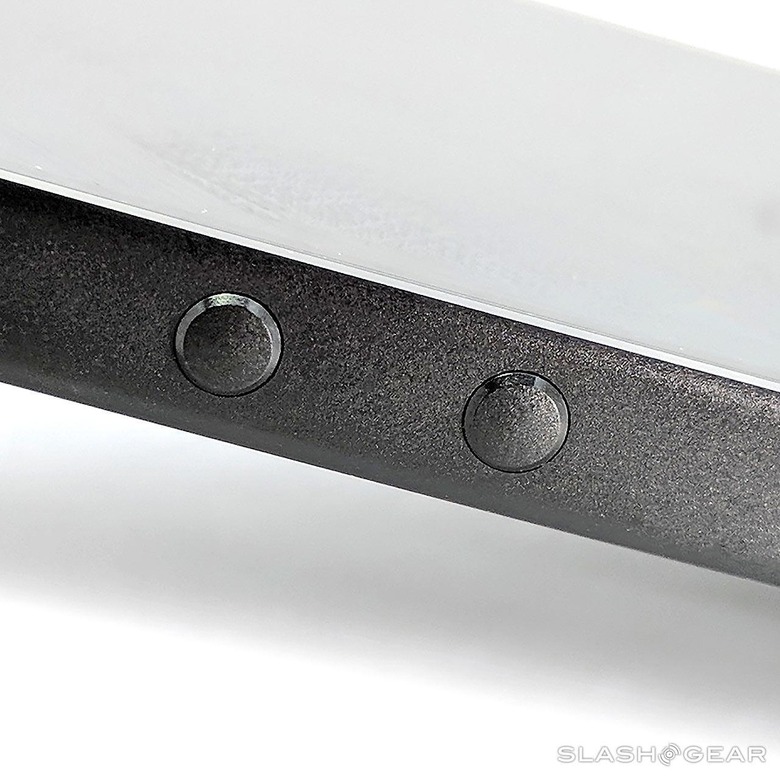
On the left of the phone is a pair of circular buttons. One turns the device speaker audio up, the other turns the volume down. These buttons are essentially the same as they were in the NextBit Robin as well. They work well and sit firmly in place.
The bottom of the device has a USB-C port and a single mic opening. The mic is in essentially the same spot as it was with the NextBit Robin, but the USB port is moved from the left end of the device to the center. This likely has a lot to do with potential accessories for the phone.
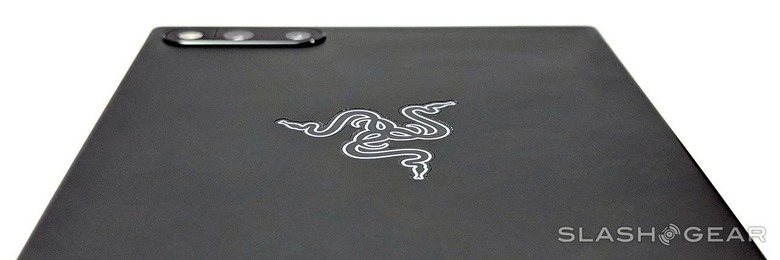
On the top is another mic opening, and around back is a unique looking pill shape with two cameras and a dual-LED flash. I say unique looking because most devices with a camera-filled pill shape at their back also have that spot raised well above the surface of the phone. This one also sits up about as far into the corner as the engineers of this phone could get it.
I feel like the camera pill is the only not-quite-right looking part of the phone, top to bottom. I wish that it were a bit more finessed – either more hidden or more prevalent. Right now it looks like almost an afterthought. I wouldn't even have noticed it or mentioned it had the rest of the phone been less striking – but the rest all looks so refined that this one element looked out of place.
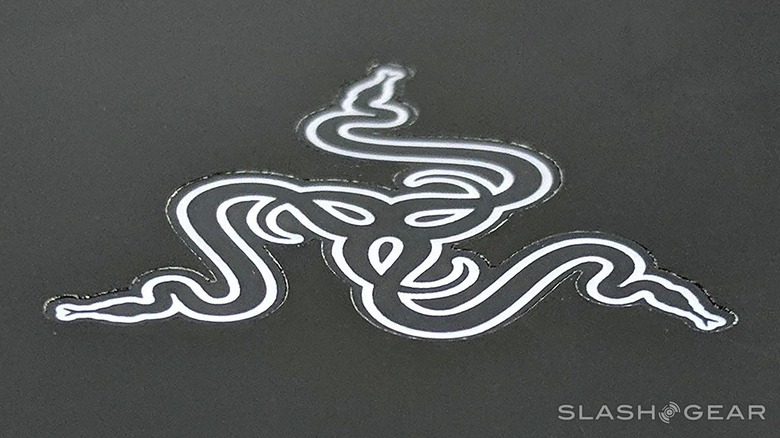
The back of this phone is also home to a three-snake Razer logo. That's analogous to Apple's simple Apple logo, and it's placed in a similar location. The three-snake logo usually makes the products it adorns look like they're from a different universe. Here they're pressed into the metal, representing the cult element in the Razer persona like a secret symbol cut into an arm.
Display
The Razer Phone's 120Hz IGZO LCD display is 5.7-inch diagonally. This display has 1440 x 2560 pixels across it, and it's imbued with a lovely Wide Color Gamut (WCG). Over the face of this display is Corning Gorilla Glass 3 for full scratch and crack resistance.
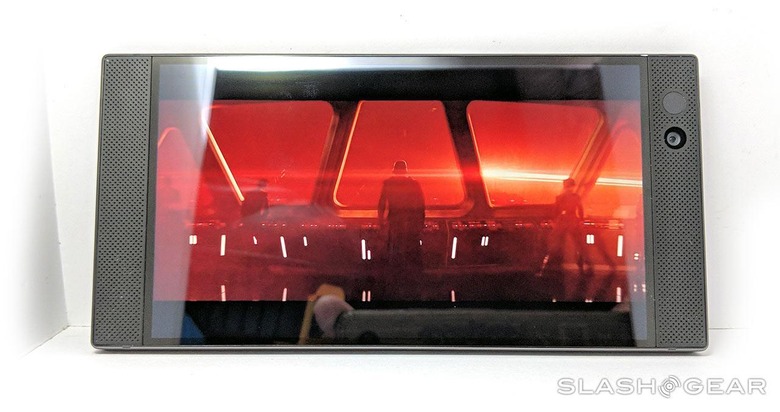
The display we're working with here is capable of a 120Hz refresh rate. This is the only phone in the world with this feature (outside Sharp Aquos phones, which aren't widely available, nor aimed at games, really.) The iPhone X has 120Hz touch sampling, but not 120Hz refresh rate, while the iPad Pro (beyond the first model) DOES have 120Hz refresh rate. Apple calls their version of the tech "ProMotion."
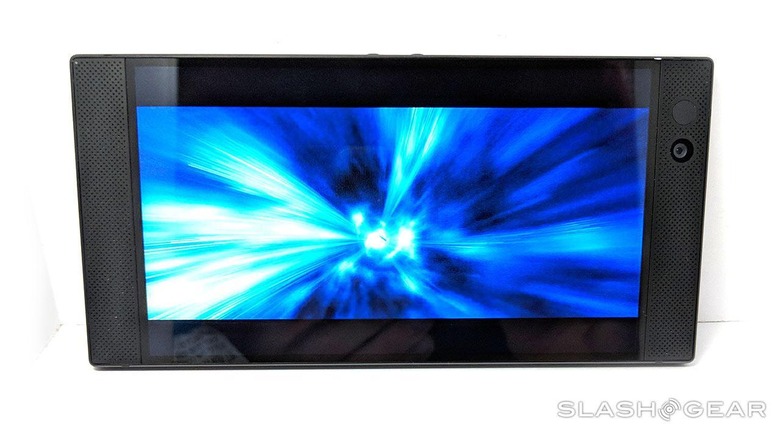
A few apps that benefit from the ramped-up visuals in the Razer Phone so far include: Final Fantasy XV Pocket Edition, Gear.Club, Lineage 2: Revolution, Runescape, Old School RuneScape, Shadowgun Legends, Tekken, Titanfall: Assault, and World of Tanks Blitz. As you'll find in the software section below, the benefits do not end there – settings allow the user to adjust the performance of the phone (and thereby its display) on an app-to-app basis.
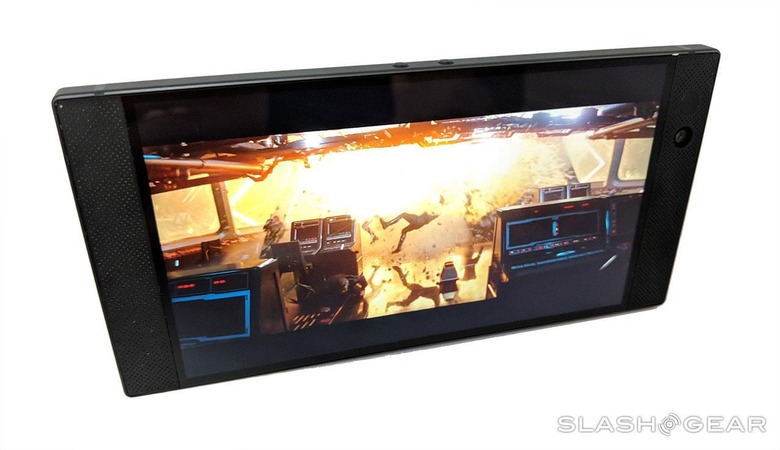
The display in this device is every bit a top-level performer. It's not as eye-searing as a Samsung Galaxy S8 display – but it doesn't need to be. The colors here are somewhere between the Google Pixel 2 XL (somewhat subdued) and the Galaxy S8 (far more intense than real life). As such, the Razer Phone has just about the most ideally balanced display in a smartphone today.
Software
Inside this Android device is Android. This is not the first Razer device to use Android – they've also released an Android TV device and have connected with Android devices with several wrist-bound accessories. The device runs Nova Launcher right out the box. Despite having a skin over the top, this device runs exceedingly swiftly.
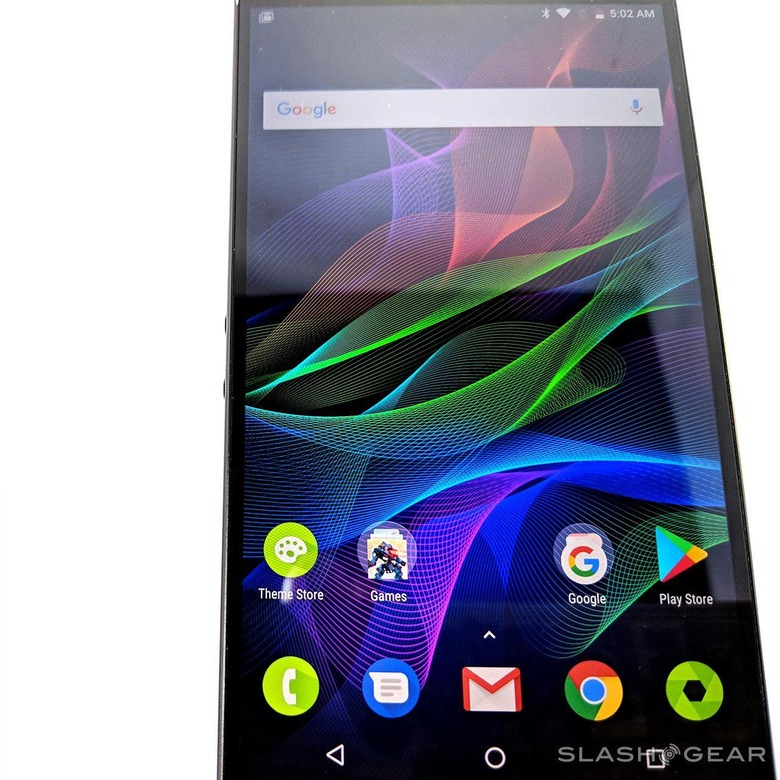
Because it runs Nova Launcher right out the box, there's a litany of options for customization for the device's homescreens and app drawer and basically everything else. This is the only device in the world, currently, that runs Nova Launcher as its only Home app.
Users can just as easily download any other homescreen replacement app if they do so wish, but know this – this is not just a simple app, and it cannot simply be deactivated. Not unless you download and activate a different homescreen replacement app, that is.
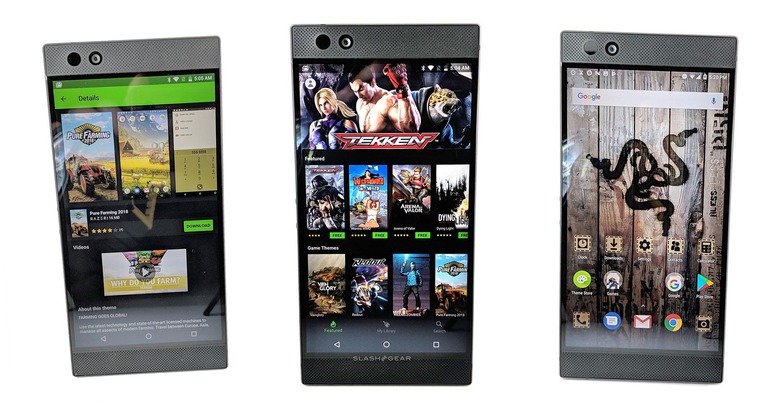
I wasn't especially pleased to find a set of three games downloading right out the gate. I changed my mind once I realized that the games downloading were three of those that take full advantage of the devices implementation of a 120Hz refresh rate. Titanfall Assault, World of Tanks Blitz, and Gear.Club all begin to download as soon as the device connects to the web. Each can be deleted immediately if the user does so choose.
Perhaps the most excellent modification Razer's made on this device is the Game Booster. This set of performance adjustments appears in the main phone Settings and provides users the ability to adjust optimizations on a per-game basis. Users can also add non-game apps to the list if they wish.
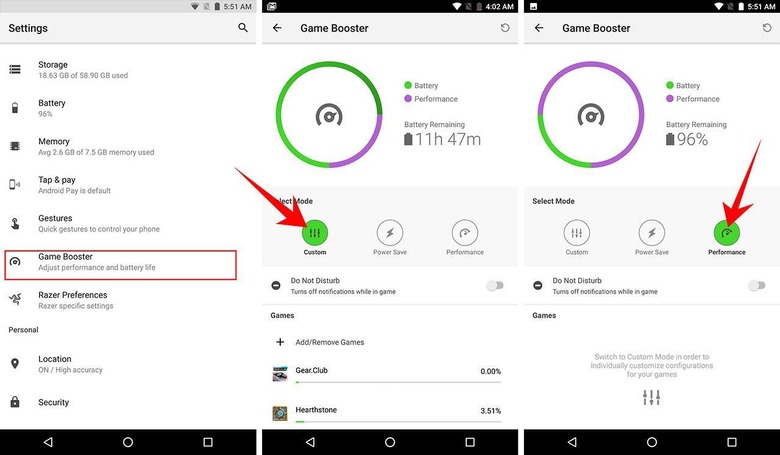
Each individual app can be adjusted with CPU clock, Resolution, Rame Rate, and Anti-aliasing. In this one unique section of the phones settings, you'll find more PC-like controls than any other smartphone on the market today. These adjustments are absolutely invaluable for both gamers and any other sort of user.
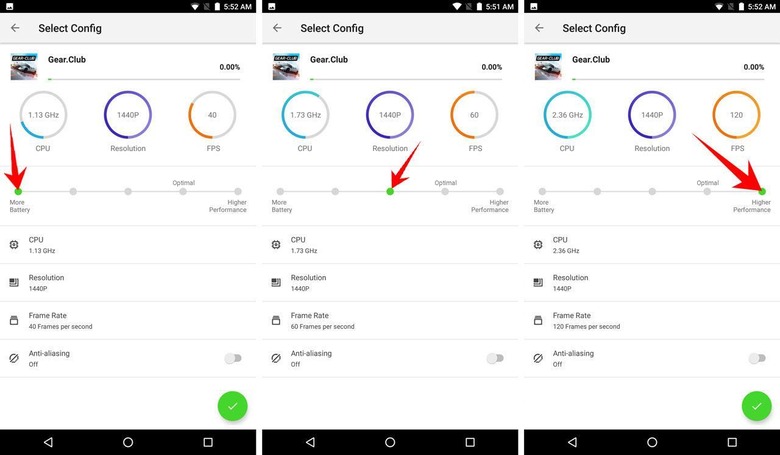
If you're going to be on a long commute (assuming you're not driving) and you'd like to conserve battery as you play games – no problem. Turn down the CPU clock, resolution, and frame-rate to minimal. Want to play your favorite Android game with higher resolution and a smoother picture than on any other smartphone in the world? By all means, go ahead and do so.
Speakers
The front-facing speakers have the ability to get extremely loud. Once they're up to maximum volume, the quality is on-par or better than any smartphone-based speakers I've ever experienced. These speakers get louder than is reasonable to listen to at a distance of several feet. It's loud enough to hear across a dorm room or a moderately sized living room with ease.
There is no headphone jack in this device, which is a bummer. It'll be a bummer until no more headphone jacks exist on any smartphone. To the credit of the designers of this phone, they've replaced the headphone jack with just about as good an accessory as they could have mustered. One cannot charge the phone at the same time as one uses the USB-C THX DAC Audio Adapter included in the box, but the quality makes up for the loss of functionality.
As far as my untrained non-audiophile ears can tell, the quality audio delivered with this DAC is just as good as any headphone jack's delivered before. It might even be better.
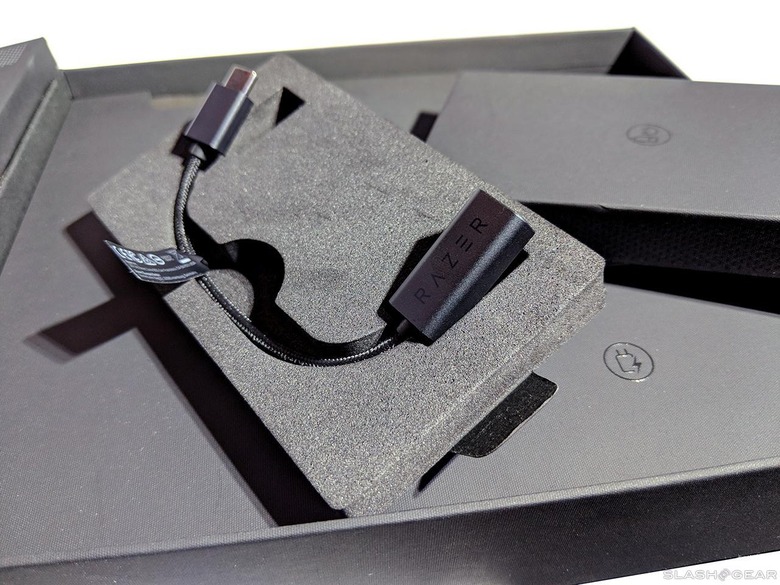
Camera
Razer did not strive to put much of a spotlight on the camera on this device. If they had wanted the camera to shine, they'd have put more options in the camera software. As it stands, the camera only has very basic camera software features. The output is fair. Far better than the best cameras from a few years ago, and just as good as any high-end phone from late 2016 to early 2017.
Have a peek at the photos I've taken with the Razer Phone in the gallery above. Razer placed almost no emphasis on the quality of the camera in the device's main listing online, so we're not entirely surprised to find the camera lacking much detail. Photos don't quite pop as much as photos from, for example, the Pixel 2, or the Galaxy S8.
For those users not purchasing the phone for its photography finesse, the quality of the camera will be more than enough for the random snap.
UPDATE: It would seem that Razer heard their cult calling for more camera quality – at least a little bit. Have a peek at this update post to see what's changed so far.
Battery
The battery on this device is pretty gosh-darned good. If I use the device without a SIM card – that is, without mobile data – it lasts for days at a time. That'll be a real winning element for those users that plan on purchasing this device as a sort of miniature gaming tablet.
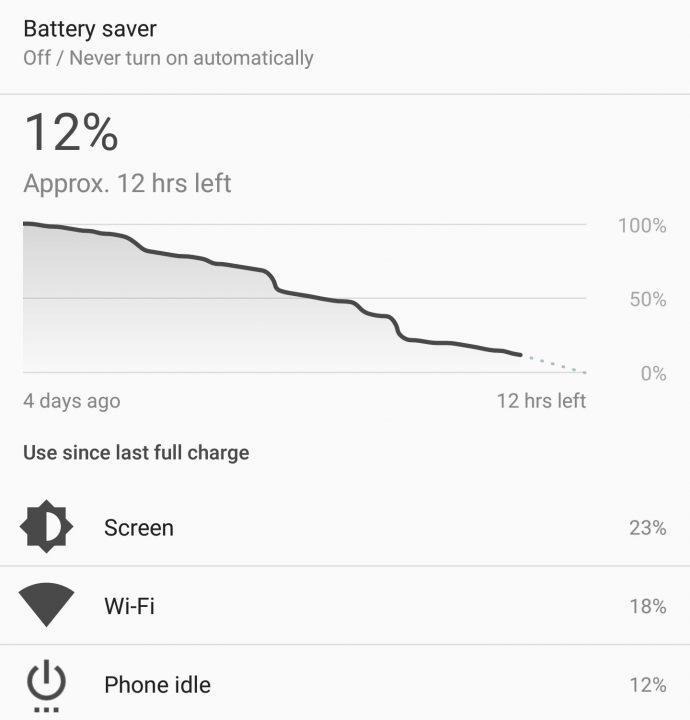
For those that need that mobile data, no worries. This device has never run less than 12 hours for me from a full charge. A full day of work – or an airplane ride across the country – shouldn't be an issue. This device has a 4000mAh lithium-ion battery and rolls with Qualcomm Quick Charge™ 4+. That means it's ahead of the game, in a very good way.
Wrap-up
Brand New At Smartphones Alert: It's difficult to really judge Razer on their software game just yet. If only because they've never really been a smartphone company before now, we can't be sure how they'll handle it. As such, we'll consider this a Review Part 1, with an expectation of an update after a few weeks and/or months.
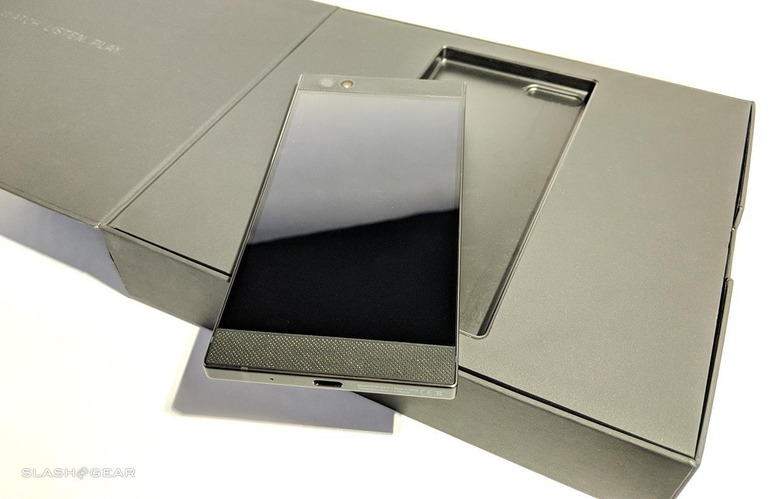
The hardware is up to snuff. The hardware here, without a doubt, is some of the finest work I've seen in the smartphone industry, and easily one of my favorites of the year. This is the part where I'd normally say "wait until they make their second phone," but everything I've experienced so far says this first device is a real winner.
Razer recognized the best design and software elements in the original NextBit Robin device. Razer's courage came in keeping those bits and pieces in a device that's now a Razer at heart. This device isn't the most extremely bright, nor the most massive, nor the phone with the biggest battery on the market. Razer knew they made a device that could have failed because of its lack of "new" features – but they released it anyway.
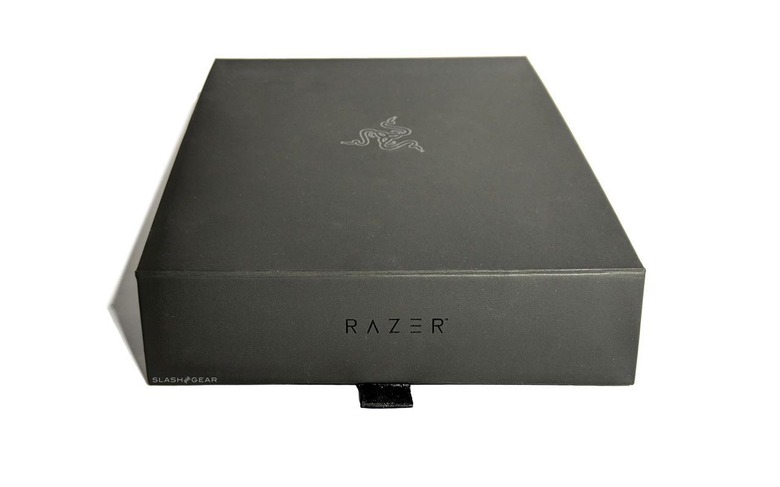
Razer released a smartphone that's the best in its field, made for gamers but well above average for everybody else.
The Razer Phone (2017) can be purchased from Razer online for approximately $700 USD. This is without contract and without a carrier – you'll have to buy that stuff separate.

